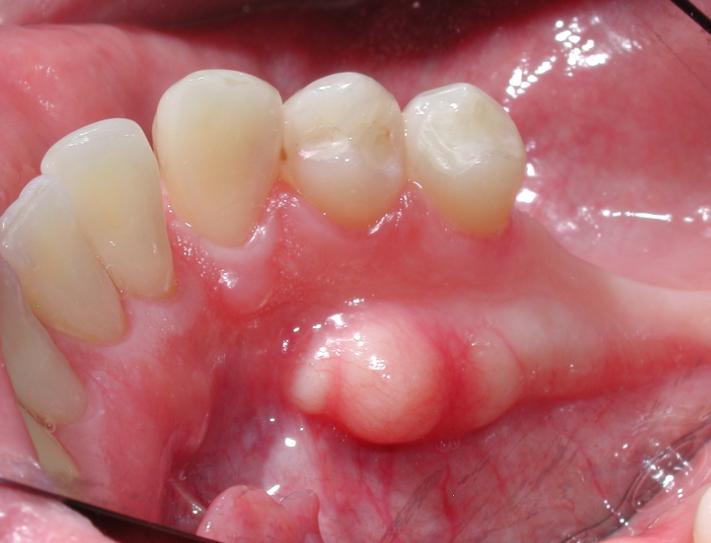What are the symptoms of torus mandibularis?
Torus mandibularis is a benign bony growth that occurs on the inner surface of the mandible (lower jaw). Here are the common symptoms associated with torus mandibularis:
- Bony Growths: The primary symptom is the presence of one or more hard, bony lumps on the inner surface of the mandible, often near the premolars.
- Asymptomatic: In many cases, torus mandibularis does not cause pain or discomfort and may be discovered incidentally during dental exams or imaging.
- Discomfort: If the growths are large, they might cause discomfort or irritation, particularly when eating or speaking.
- Difficulty with Dentures: Large tori can interfere with the fitting of dentures or other dental appliances.
- Infection or Ulceration: In rare cases, if the torus becomes irritated or injured, it may become inflamed, leading to infection or ulceration.
- Altered Speech or Chewing: If the growths are substantial, they may affect the way a person speaks or chews, though this is less common.
Typically, torus mandibularis does not require treatment unless it causes significant discomfort or interferes with dental appliances. If necessary, surgical removal may be considered.
What are the causes of torus mandibularis?
The exact cause of torus mandibularis is not fully understood, but several factors are believed to contribute to its development:
- Genetics: There is evidence that genetics play a role in the development of torus mandibularis. It often runs in families, suggesting a hereditary component.
- Environmental Factors: Habitual factors such as grinding or clenching of the teeth (bruxism) may contribute to the formation of tori by placing extra stress on the jawbone.
- Mechanical Stress: Chronic mechanical stress or pressure on the mandible may trigger the growth of bony projections. This could be related to factors such as the use of dental appliances or certain chewing habits.
- Hormonal Factors: Hormonal changes or imbalances might influence bone growth and development, although this connection is less clear.
- Bone Density: Variations in bone density and structure may contribute to the development of tori.
Torus mandibularis is typically a benign condition and does not usually indicate an underlying health issue.
What is the treatment for torus mandibularis?
Torus mandibularis generally does not require treatment unless it causes discomfort or interferes with dental function. Here are common approaches if treatment is needed:
- Observation: If the torus mandibularis is asymptomatic and not causing any problems, it may simply be monitored over time.
- Pain Management: If the torus causes discomfort or pain, over-the-counter pain relievers, such as ibuprofen or acetaminophen, may be used to alleviate symptoms.
- Dental Appliances: If the torus interferes with the fitting of dentures or other dental appliances, your dentist may make adjustments or recommend specific modifications to improve comfort.
- Surgical Removal: In cases where the torus causes significant discomfort, affects dental procedures, or is growing, surgical removal may be considered. This is typically done by an oral surgeon under local anesthesia. The surgery is usually straightforward and aims to remove the excess bone while preserving the surrounding tissues.
- Oral Hygiene: Maintaining good oral hygiene is important to prevent any potential complications, especially if the torus becomes irritated or sore.
Most people with torus mandibularis do not experience major issues and can manage the condition with minimal intervention.

Leave a Reply
You must be logged in to post a comment.